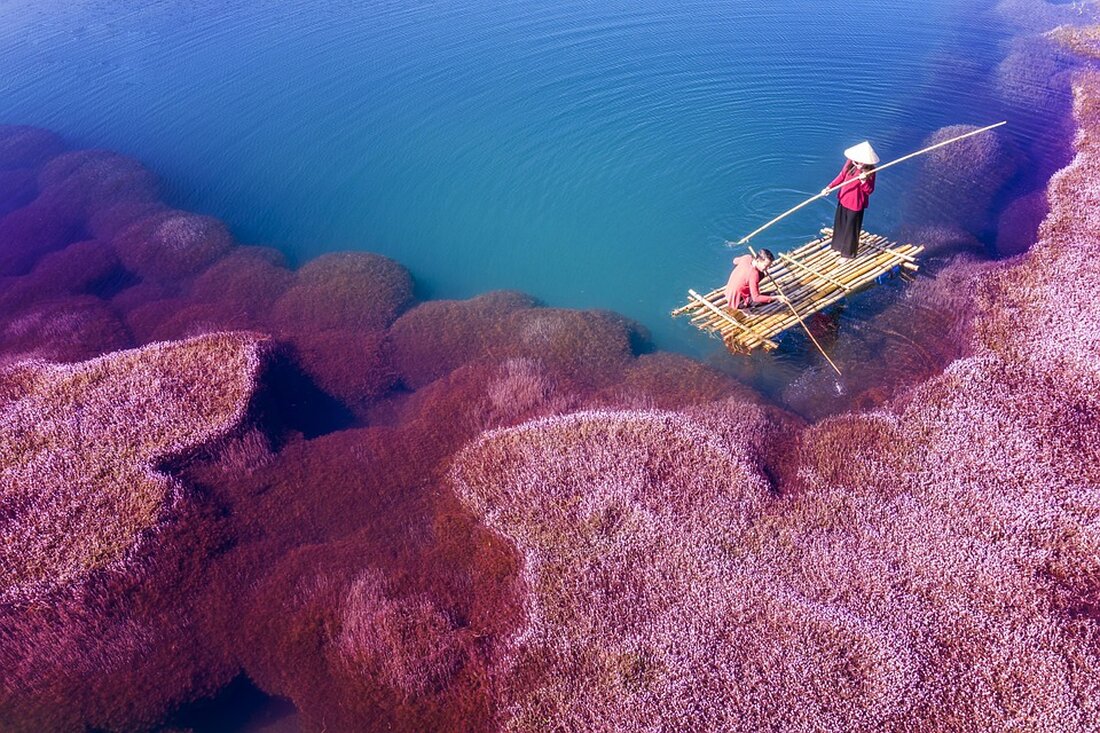The Dong Van Geopark: UNESCO gem for sustainable tourism!
Dong Van Geopark in Ha Giang, Vietnam promotes sustainable tourism and preserves cultural diversity until 2030.

The Dong Van Geopark: UNESCO gem for sustainable tourism!
The Dong Van karst plateau in northern Vietnam, declared a UNESCO Global Geopark in 2010, rises majestically above the surrounding landscapes. With a total area of 2,356.8 square kilometers, the geopark covers the districts of Quan Ba, Yen Minh, Dong Van and Meo Vac. This region, which lies close to the border with China, is not only geologically significant but also rich in cultural diversity, as 17 ethnic minorities such as the Hmong and Dao live there.
The Geopark's geological and geomorphological treasures include over 80 heritage sites that reflect the history of hundreds of millions of years of tectonic activity. The geological diversity ranges from sedimentary to igneous to metamorphic rocks and bears witness to key events in Earth's history, including two major mass extinctions.
Sustainable tourism development
As part of Ha Giang Province's tourism development plan, the geopark is expected to be developed into an important national tourism area by 2030. This is done with the aim of preserving and disseminating the cultural, historical and ecological values of the region. Activities such as corn cultivation and traditional cake production offer visitors the opportunity to immerse themselves in the local culture.
Traditional festivals have been successfully revived and upgraded as tourism products to increase visitor numbers. Loud Report Ha Giang is expected to attract over 3.2 million tourists in 2024. In the first week of May 2024, more than 146,200 visitors have already been received, representing an increase of 2.3% compared to the previous year.
Ecological diversity and preservation
The region is home to two nature reserves rich in flora and fauna, including rare species such as the Tonkin snouted monkey, considered one of the 25 most endangered primate species in the world. This species lives exclusively in Hà Giang and was only rediscovered in the early 1990s after a long period thought to be extinct.
The geopark's climatic conditions vary significantly, resulting in diverse biodiversity. The average altitude is between 1,400 and 1,600 meters, while the climate is predominantly temperate with temperatures varying between 24 and 28 °C, although it can drop to 5 °C in winter. The geomorphological features, including the Mieu Vac at 1,971 meters and the Tu San, which is the deepest gorge in the park at a depth of around 800 meters, offer impressive natural experiences.
By focusing on sustainable tourism development, the Dong Van Karst Plateau Geopark stands out not only for its unique geological and biological diversity, but also for its commitment to promoting community engagement and economic opportunities for the local population. With inclusion in Time Out (UK)'s 'Top 44 Most Beautiful Places in the World' for 2025, the region stands out as an attractive destination for travelers who appreciate both nature and culture.

 Suche
Suche
 Mein Konto
Mein Konto